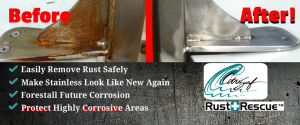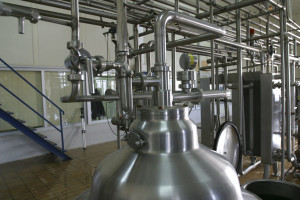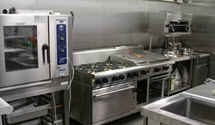z What is Passivation II
What is Passivation?
In a general context, the term “passivation” means to make something chemically passive, where passive is the opposite of active. Active surfaces react readily while passive surfaces are resistant to reactions, including corrosion reactions.
Most metals, aluminum and titanium for example, are generally self-passivating. Exposed zero valence atoms readily react with the oxygen in air to form a tough layer of oxide. If steel tools are used on such metals, trace amounts of iron can be left on the surface, and the iron will rust just as any iron would. “Passivating” such metals then is merely to remove that iron from the surface using an acid solution.
In a similar fashion, the exposed surface iron in stainless and corrosion resistant steel alloys can form rust (the severity of which depends on the grade and conditions). Again, passivating refers to removing the surface iron with an acid solution. This is the definition of “passivation” used by the ASTM A 967 specification. In this case, the other components of the alloy (primarily chromium, often nickel as well) are left behind as a surface layer over the underlying steel, and upon exposure to air they also react with oxygen to form an oxide layer that protects the rest of the steel from corrosion. This passive oxide layer can be damaged through mechanical means, once again exposing iron that is subject to rusting. This is why passivation is the final step in any manufacturing process of stainless steel parts. Welding creates a heat affected zone in which the alloy structure is altered, also typically needing passivation to restore the corrosion resistance. Chemical damage to the passive layer can be caused by exposure to chlorides. Bleach, salt, and oceanic environments are especially harsh on stainless steel.
Aside from the safety advantages of using citric acid for passivation rather than nitric acid, there is a major advantage at the atomic level. Nitric acid attacks the surface iron first, but when it diminishes the other elements in the alloy are removed as well. This effectively limits the depth of the final passive chrome oxide layer, as well as introducing heavy metals into the bath which are classified as hazardous waste. Citric acid, on the other hand, does not attack the other elements in stainless steel. It removes only the iron.
Safer chemistry allows for higher bath temperatures, which aids in bringing iron from several atom layers down to the surface at a faster rate, enabling their removal as well. The safer chemistry also allows the use of ultrasonics, which enhances the cleaning powers of the acid bath. These factors allow citric acid passivation to deliver the maximum possible protective passive layer. Also contributing to the final corrosion resistance of the steel is the crucial exposure to air following the acid bath and rinse. Longer dry times and/or drying at high temperature allows the passive oxide layer to grow deeper into the metal.
The selective removal of iron by citric acid raises one problem when passivating grades of stainless steel that contains sulfur or high levels of carbon. Those two elements are left behind on the surface just as the chromium and nickel is. In the case of carbon, the steel turns dark in color. In the case of sulfur, globs of sulfide appear on the surface, looking very similar to rust. Both problems can be avoided by removing those elements from the surface with an alkaline solution before and/or after to exposure to the citric acid.
You may also hear about zinc, chrome, or chromium passivation, all of which refer to a common but entirely different process, the creation of a corrosion preventing chromate conversion coating over zinc or a zinc-coated substrate, usually iron or steel. Whereas with stainless steel, the chromium is already present in the alloy.





